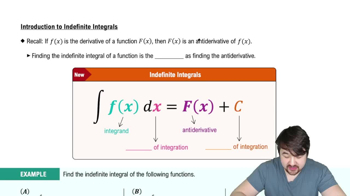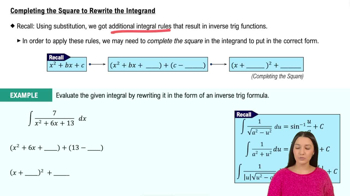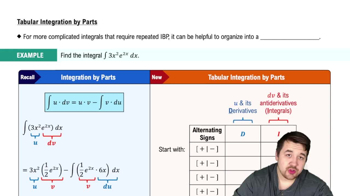90–103. Indefinite integrals Determine the following indefinite integrals.
∫ (⁴√x³ + √x⁵) dx
 Verified step by step guidance
Verified step by step guidance Verified video answer for a similar problem:
Verified video answer for a similar problem:



 5:04m
5:04mMaster Introduction to Indefinite Integrals with a bite sized video explanation from Patrick
Start learning